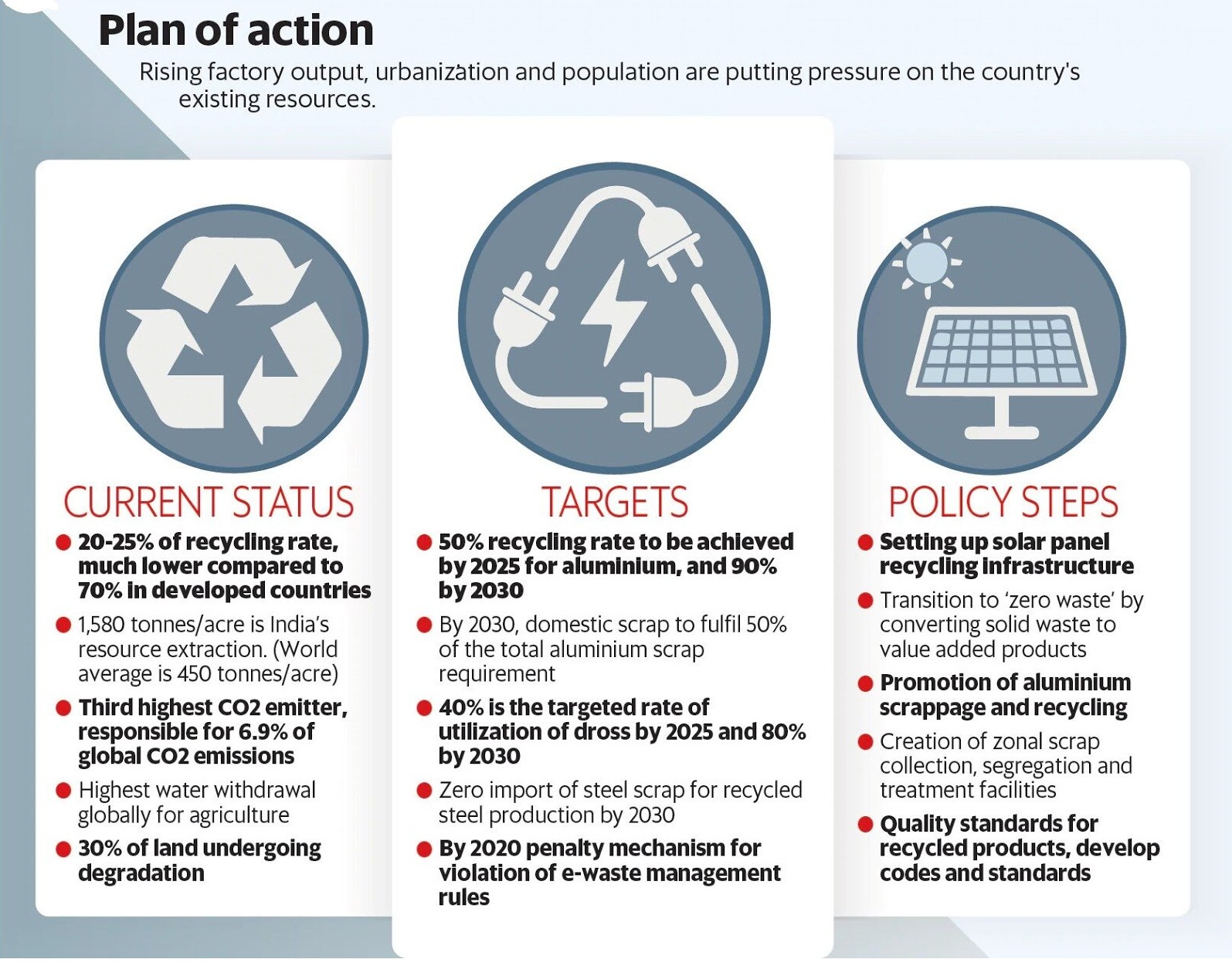Recycle and Reuse Policy | 25 Sep 2019
Recently, the Union Ministry of Environment, Forests & Climate Change has drafted a National Resource Efficiency Policy, in order to double the recycling rate of key materials and enable the upcycling of waste.
Key Highlights
- In the backdrop of the concerns over depleting resources in India because of rising factory output, urbanization, and increasing population, the pressure on existing resources has significantly increased.
- In a circular economy, the use and dispose model won’t work further. The emphasis is to be laid upon reusing and regenerating resources as much and as long as possible so as to make the resources sustainable.
- This can be done in two ways: firstly, recycling the materials, and secondly, increasing the efficiency of usage of these resources.
- Recycling is basically dealt with by industries alone but the Resource efficiency needs to be followed across all sectors and demands focused intervention from all the stakeholders.
- Hence, the government formulated the National Resource Efficiency Policy that envisions how the existing policies are currently working for the promotion of resources, and how life cycle thinking can be promoted across the different stakeholders so that they do not feel isolated.
- The policy helps to develop resource-efficient strategies for different sectors and adopt them into a three-year action plan.
- The linear production and consumption model is leading towards a lot of wastage in the entire value chain.
- Opportunities at each and every stage of the product cycle exist which can be utilized, especially at a time when the economy is going through a rough patch.
- After the National Green Tribunal imposed a ban on more than ten years old diesel vehicles in the National Capital Region, more vehicles life came to an end.
- Under the framed policy, the government plans to set up:
- Collection centres to collect such vehicles and carry out the deregistration process, and
- Shredding centres which would segregate materials for recycling.
- The plan is to ensure 75% recycling rate for vehicles made before 1990, 85% recycling rate for vehicles made between 1990 and 2000, and 90% recycling rate for vehicles made after 2000.
- Under the framed policy, the government plans to set up:
- Another concern is related to the plastic waste that contributes to 8% of the total solid waste that is addressed by this policy.
- The draft policy aims to achieve a 100% recycling and reuse rate polyethylene terephthalate (PET) plastic by 2025.
- The policy is like a guiding document. The need of the hour is to actively implement the framed rules on ground, by the respective ministries and departments. Also, every sector of the economy must move towards sustainable use of resources and proactively accept sustainable alternatives.

